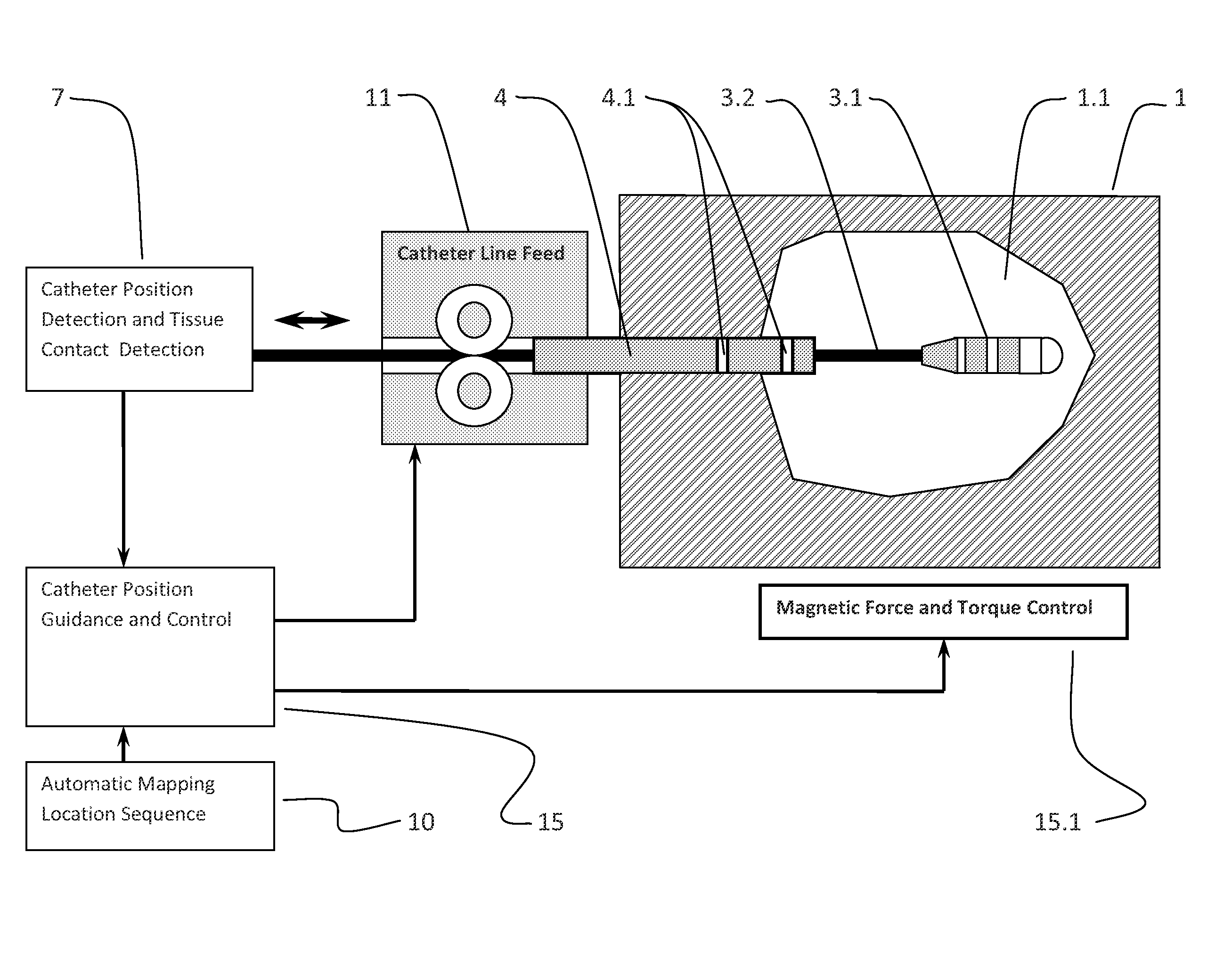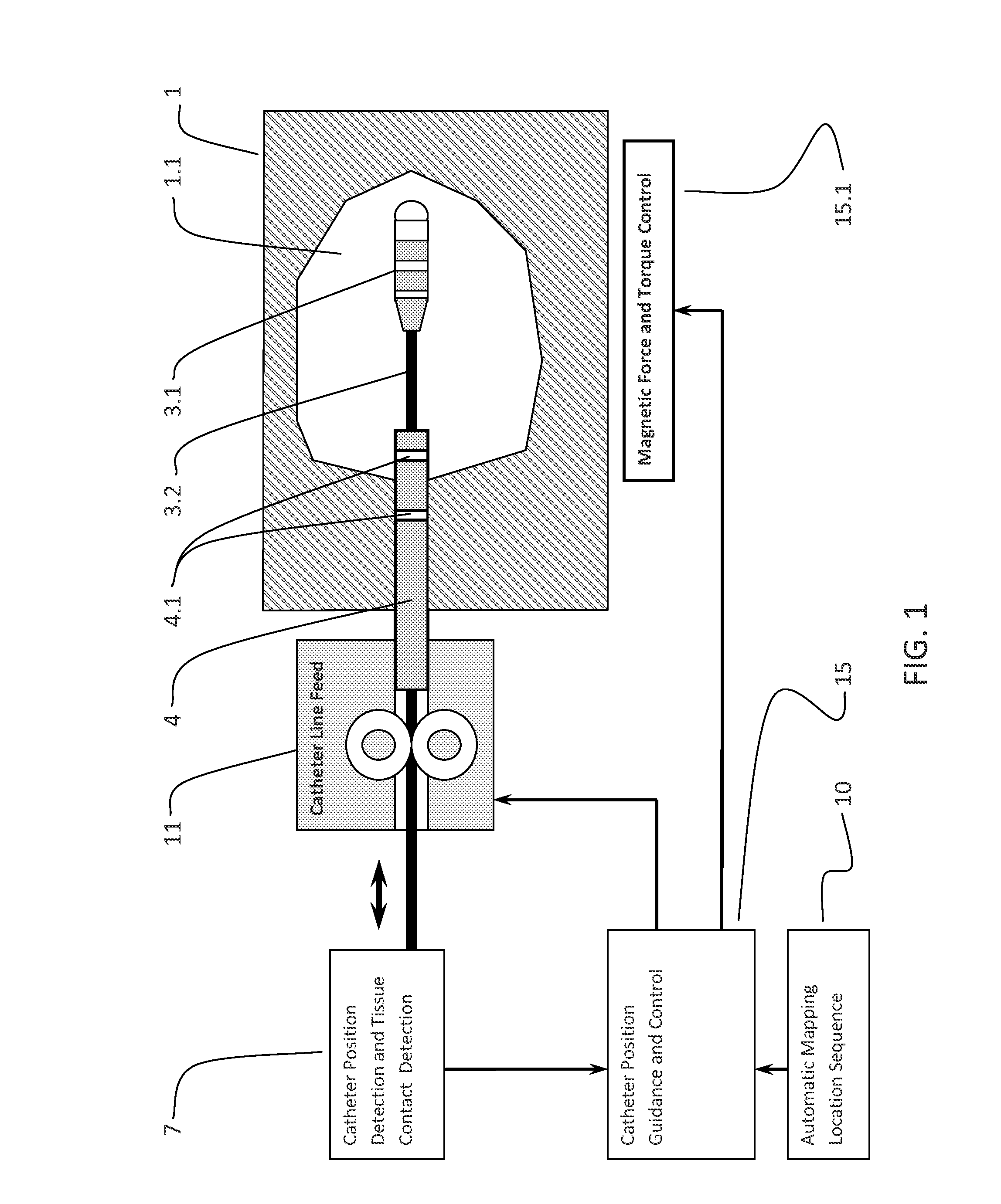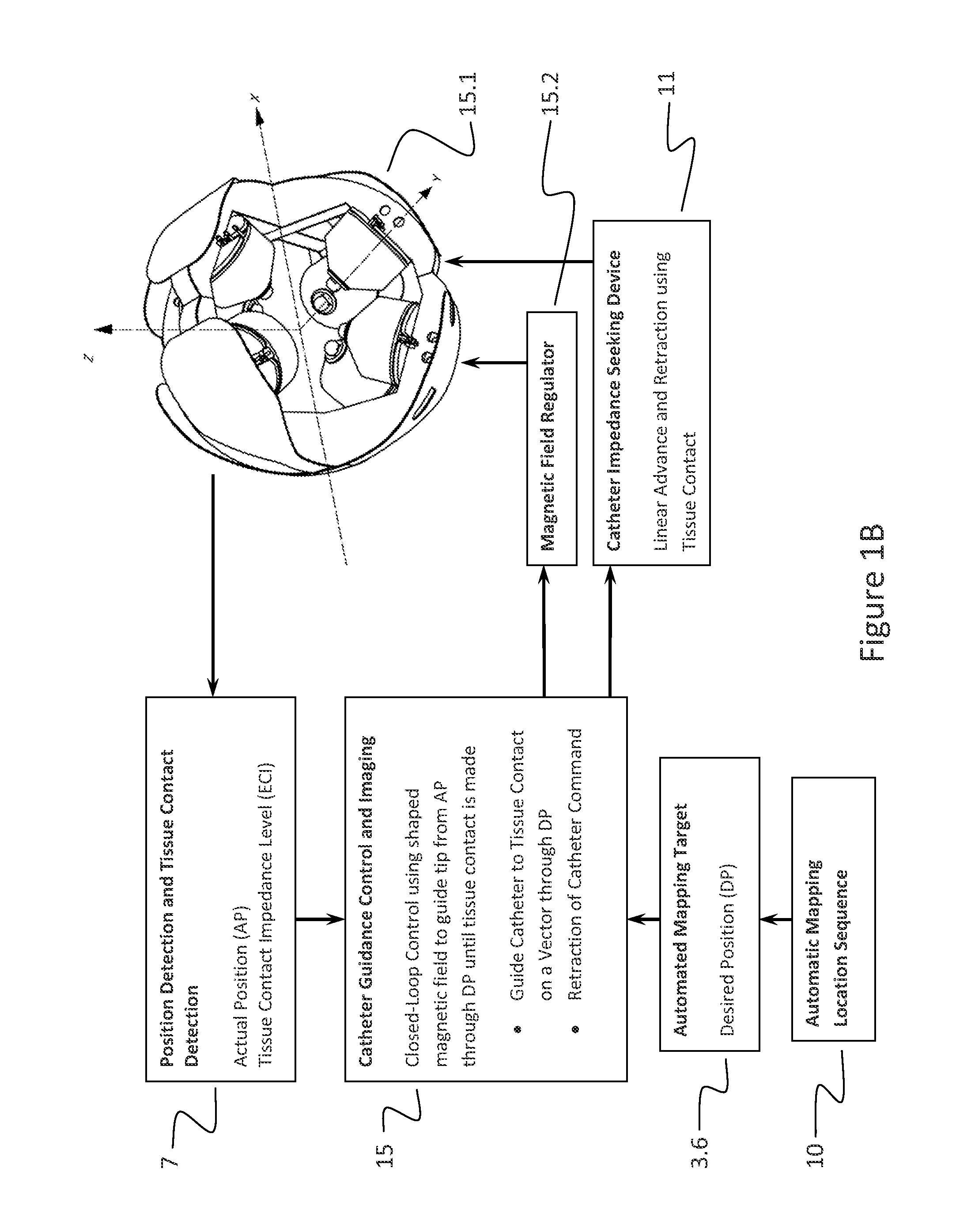System and method for using tissue contact information in an automated mapping of cardiac chambers employing magneticly shaped fields
a technology of magnetic field and cardiac chamber, applied in the field of medical mapping systems, can solve the problems of difficult positioning or maintaining the catheter at the desired position, difficult to precisely locate aberrant tissue, and uneven distension of the chamber walls, so as to optimize the necessary power requirements and preserve symmetry within the effective space
- Summary
- Abstract
- Description
- Claims
- Application Information
AI Technical Summary
Benefits of technology
Problems solved by technology
Method used
Image
Examples
Embodiment Construction
[0097]The present invention is a method for guiding an interventional device in a magnetic environment comprising the steps of providing a magnetic navigation system, placing a catheter with an electrode array within a magnetic environment generated by a plurality electromagnets, using a sensor interface to receive signals from the catheter and, in response, generating a processed signal, using a processing and control unit to receive the processed signal and to calculate a position of the electrode array, and using the calculated position of the catheter to guide movement of the catheter within the waveguide environment.
[0098]FIG. 1 is block diagram of a catheter guidance control and imaging system that uses tissue contact information. An introducing sheath 4 is inserted into a patient 1 until the distal end is within a cavity or chamber 1.1 to be mapped. The introducing sheath 4 comprises a plurality of position detection electrodes 4.1 which are used to determine both the positio...
PUM
 Login to View More
Login to View More Abstract
Description
Claims
Application Information
 Login to View More
Login to View More - R&D
- Intellectual Property
- Life Sciences
- Materials
- Tech Scout
- Unparalleled Data Quality
- Higher Quality Content
- 60% Fewer Hallucinations
Browse by: Latest US Patents, China's latest patents, Technical Efficacy Thesaurus, Application Domain, Technology Topic, Popular Technical Reports.
© 2025 PatSnap. All rights reserved.Legal|Privacy policy|Modern Slavery Act Transparency Statement|Sitemap|About US| Contact US: help@patsnap.com



